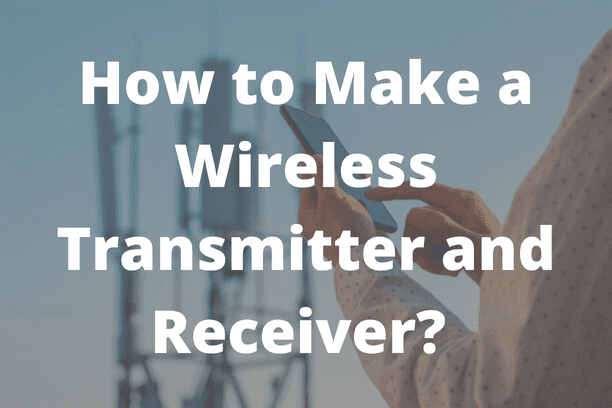How to Make a Wireless Transmitter and Receiver Circuit Diagram With the needed libraries included, we now create a RH_ASK object to send and receive data with. The RH_ASK object declaration accepts several parameters. If no parameters are passed, then the default options are assumed, but it is best to set at least the first three as these define the speed of the radio transmission, the tx pin, and the rx pin.

The data can be acquired from a physical system either by a wired or a wireless connection. Today we will see the first one. Now to acquire the data we need a sensing element that can read the physical parameters and then process and covert that data into digital form. This data will then be sent using the Serial port of the Arduino.

Time Wireless Communication System Based on 802.11 MAC Circuit Diagram
Then, input benchmark_tx python file with proper parameters setting (./benchmark_tx.py -f 900M) in transmitter side. You will see the data transmission with packet number and CRC result output from the command line. -- Thank Chris for his voice recording! Experiment 2: Voice transmission. Figure 3: system diagram for voice transmission

The document describes a project report on wireless power transfer submitted by a student for their Bachelor of Technology degree. It includes a cover page, certificate from the project guide, acknowledgements, declaration, table of contents, and sections describing the abstract, block diagram, hardware requirements including various electronic components, schematic diagram, hardware testing The rest of the chapter is organized as follows: Sec. 2 summarizes related works on real-time wireless communications technologies. Sec. 3 provides an overview on 802.11 WLANs and RTOSs, as basic elements to realize a wireless real-time system. In Sec. 4, the architecture of a WNCS is described and its performances are evaluated in Sec. 5.

Real Time Data Acquisition System Using Arduino Circuit Diagram
Wireless Systems and Core Components. Wireless communication systems rely on a precise interplay of transmitters, receivers, and antennas to transmit and interpret electromagnetic waves. These components form the backbone of wireless technology, enabling everything from basic radio broadcasts to modern high-speed networks. Ultra-reliable and low-latency communication (URLLC) is promising to enable real-time wireless control systems for tactile internet. In such a system, it is difficult to maintain extremely high quality-of-service (QoS) in URLLC for real-time control. In this paper, we develop a probability-based device-to-device (D2D) scheme to deal with this issue, where communication and control are jointly
